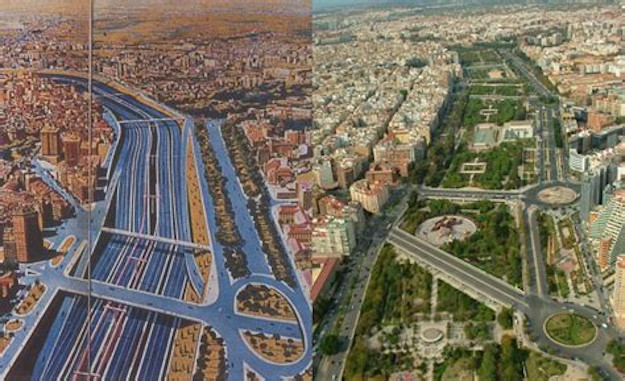One of the strategies to improve the use of bicycles is to build bike infrastructures like buildings, bike lines, bike parks and so on. Bike lines should flow on roads and avoid sidewalks. It is better to put barriers between bike lines and car lines like bollards, bushes or cement or plastic objects. In some cases, only paint is used giving pictures such as the bellow photograph as a result. Interestingly as you can see, the bike line goes opposite way the car line which is also a one-way bike road. As a result, bicycles can ride the two sides. The problem that I see is that allowing cars to park so close to the bike line could provoke a clash between a distracted car driver and a biker (take into account that this picture was taken in Spain in which left-hand driving is official). Moreover, I feel there is little room in the street and some bad car drivers, like the one of the red car, take advantage of it by invading the car line. It would be better to transform the left parallel parking into a segregated bike line. This way the potential crashes would not take place.



